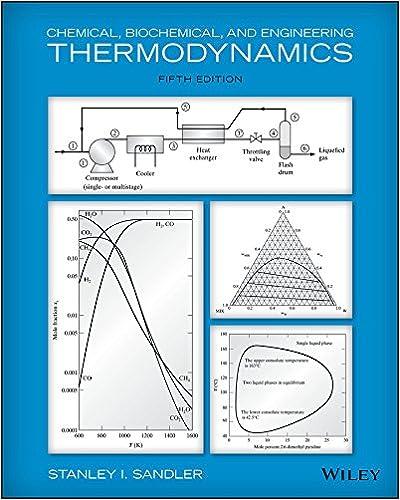A portable engine of nineteenth-century design used a tank of compressed air and an evacuated tank as
Question:
A portable engine of nineteenth-century design used a tank of compressed air and an “evacuated” tank as its power source. The first tank had a capacity of 0.3 m3 and was initially filled with air at 14 bar and a temperature of 700◦C. The “evacuated” tank had a capacity of 0.75 m3. Unfortunately, nineteenth-century vacuum techniques were not very efficient, so the “evacuated” tank contained air at 0.35 bar and 25◦C. What is the maximum total work that could be obtained from an airdriven engine connected between the two tanks if the process is adiabatic? What would be the temperature and pressure in each tank at the end of the process? You may assume that air is an ideal gas with C∗P = 7R/2.
Step by Step Answer:

Chemical Biochemical And Engineering Thermodynamics
ISBN: 9780470504796
5th Edition
Authors: Stanley I. Sandler





